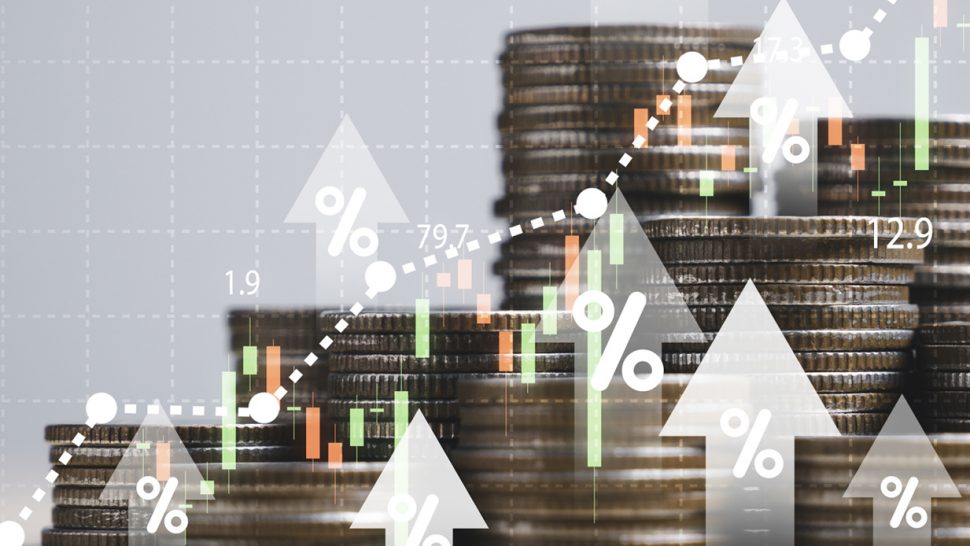Investment Commentary – 2nd Quarter 2022

Overview
There is a danger, when writing quarterly reports, that we become repetitive. However, themes and events that affect the direction of markets can, and do, persist for a long time. The inflationary pressures that we have expressed concern about for some time have become solidly entrenched. Not since the 1970s and 80s has inflation reached the levels we are now seeing – 8.6% in the USA, 9.1% in the UK and 8.1% in the Eurozone at the end of Q2. Even Japan, which has essentially had deflation for decades, saw its rate reach 2.5%. Whilst these levels were exacerbated by supply-side shocks – as post-Covid demand exceeded available supply – and the continuing war in Ukraine, there is no sign of improvement yet. Central banks’ only tool to stem rising inflation is increasing interest rates. With these standing at 1.75% for the USA, 1.25% for the UK and, still, 0% in Europe at the end of the quarter it would seem more may have to be done.
In addition to trying to control inflation with interest rates, central banks are also reigning in, or planning to reign in, the financial support provided to keep economies functioning during Covid. The actions being taken are leading to expectations of economic recession. Indeed, US Federal Reserve Bank Chairman Jerome Powell has said controlling prices is the main objective even if it puts growth at risk. The question is how severe arecession – traditionally deemed to be two consecutive quarters of negative growth – will be. In the USA, first quarter GDP has contracted by 1.6% but the UK (+0.8%) and Eurozone (+0.6%) continue to grow. Purchasing Manager Indices (PMIs) remain in expansion mode (over 50) but are slipping back. Meanwhile employment remains very tight,with UK unemployment at 3.8% and US non-farm payrolls adding over 400,000 jobs in each month for the last year.
One sliver of better news has been the Chinese easing their strict zero Covid policy. As lockdowns reverse and industries reopen the economy will begin to fire up again. Indeed, the domestic stock market was one of the few to rise during the quarter – all be it by only 4%. In addition, the Services PMI rose to 54.5 in June from 41.4 in May, the highest level for 11 months.
Stock markets continued to respond negatively to this environment. The continuing re-evaluation of growth stocks, and particularly technology companies, was borne out by a 22% fall in the NASDAQ index over the quarter. Other developed economy markets fell by less, with the leading UK index being amongst the best at -4.6%. We shall await the second quarter, and first half, reporting season to see how the prospects for corporate profits look going into the second half of the year.
The following table sets out the market movements over the past quarter.
| Index | 31/03/2022 | 30/06/2022 | Change |
| CBOE UK 100 | 750 | 715 | -4.6% |
| CBOE UK All Companies | 13,347 | 12,586 | -5.7% |
| CBOE UK 250 | 18,636 | 16,306 | -12.5% |
| MSCI Private Balanced | 1,799 | 1,665 | -7.5% |
| MSCI Private Growth | 1.949 | 1,805 | -7.4% |
Macro-Economic Picture
The UK market, specifically, measured by the CBOE UK 100 Share Index has performed relatively well. However, and as mentioned last time, this performance was helped by a concentrated number of the largest index constituents. Indeed, each of the six largest companies, by market capitalisation, saw their share price rise over the quarter. Only 14 others made it into positive territory. In contrast, 54 stocks in the index were down by 10% or more. These are mainly international businesses and a better reflection of the UK, per se, is the 12.5% fall in the CBOE UK 250 Index. Smaller companies also fared badly, with the AIM Index down 16.3%. Sectors of the market deemed most likely to be affected by recession and higher interest rates have suffered worst, with miners (-18%), housebuilders (-11%) and real estate investment trusts (-19%). The only gain came from pharmaceuticals (+5%).
With interest rates rising in most parts of the world, bond markets have performed poorly. In the UK, 10-year government bond yields rose from 1.67% to 2.23% and the US equivalent rose from 2.35% to 2.99%, having been as high as 3.4%. There has been a modest easing of yields as recession concerns have deepened, implying that interest rates may not have to rise quite as much as initially feared. What we have not seen is a fall in corporate profitability. However, if companies are unable to pass on cost increases, and supply issues persist, we may well see profit margins come under pressure in the second half of the year.
Outlook
 Clearly the general economic background is disconcerting but following the recent falls many share price ratings are already reflecting the more uncertain outlook. In the long history of positive stock market returns, bouts of weakness and increased volatility such as we are experiencing now are not unusual but are obviously uncomfortable and worrying when they occur. However, sticking with good quality equities will, we believe, prove to be the best long-term strategy. As ever, stock markets tend to overshoot both on the upside and the downside and in doing so create attractive investment opportunities, which we will look to exploit.
Clearly the general economic background is disconcerting but following the recent falls many share price ratings are already reflecting the more uncertain outlook. In the long history of positive stock market returns, bouts of weakness and increased volatility such as we are experiencing now are not unusual but are obviously uncomfortable and worrying when they occur. However, sticking with good quality equities will, we believe, prove to be the best long-term strategy. As ever, stock markets tend to overshoot both on the upside and the downside and in doing so create attractive investment opportunities, which we will look to exploit.
July 2022
Fiske plc. Registered office: 100 Wood Street, London, EC2V 7AN
Member of the London Stock Exchange Authorised and Regulated by the Financial Conduct Authority
Registered in England No 02248663 VAT No. 489 1881 31




